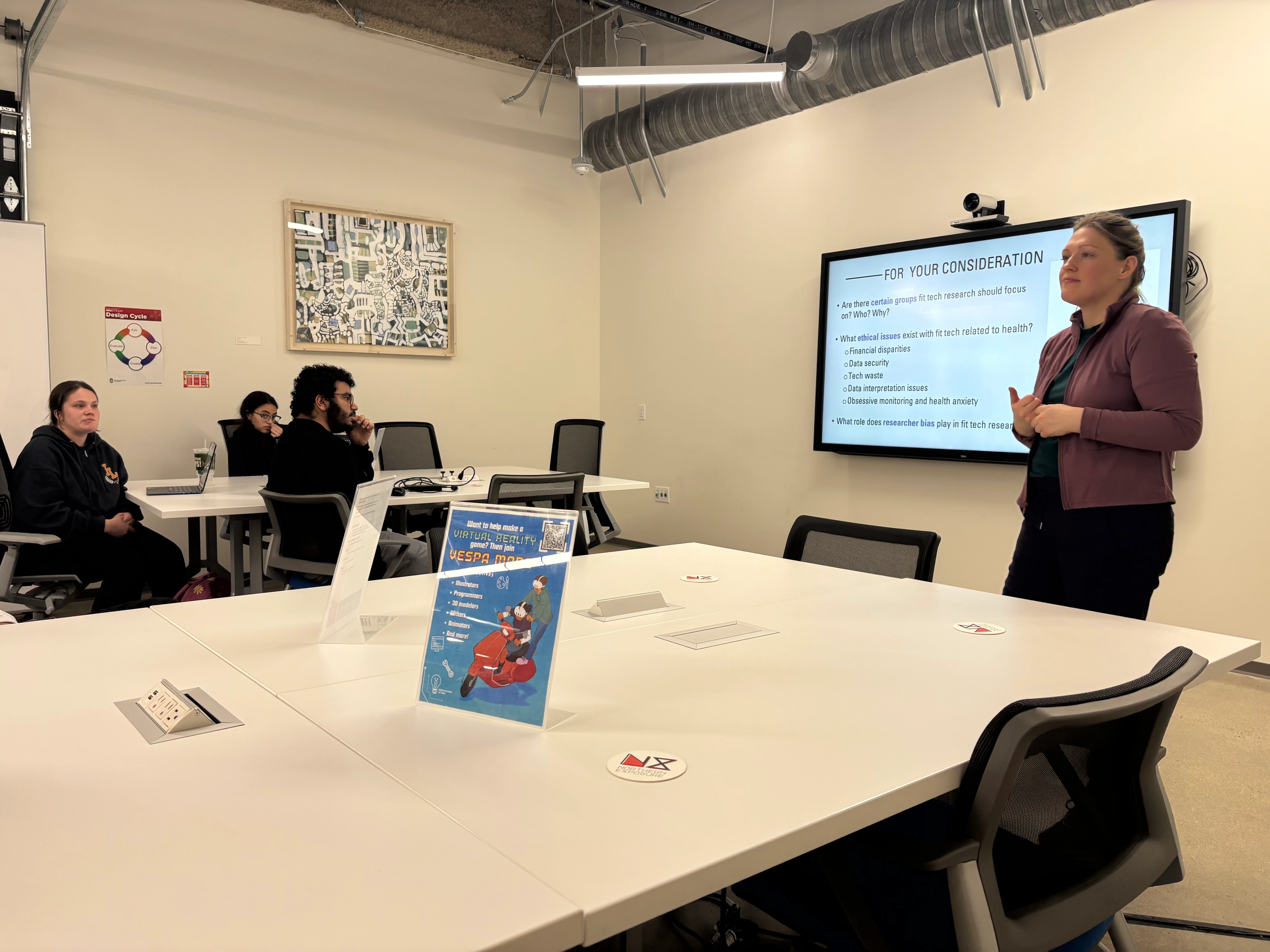At this week’s Northern Exposure talk, Dr. Lynn Herrmann, Professor of Public Health, invited the audience to take a critical look at how technology influences our physical activity, motivation, and overall well-being. Her presentation, “Make Your Move: Is Technology a Help or Hindrance to Your Well-Being?”, explored both the promises and pitfalls of digital fitness tools in shaping healthier lifestyles.
The Power—and Limits—of Fit Tech
Herrmann shared findings from meta-analyses and research reviews examining wearable devices, smartphone apps, and digital exercise interventions. On the positive side, studies show that wearable activity monitors and gamified mobile apps can significantly increase daily walking, energy expenditure, and even modest weight loss. Virtual reality and internet-based interventions also appear to boost physical activity and mental well-being, particularly among youth.
Yet, the data aren’t all glowing. Research also reveals no significant long-term improvements in physical activity outcomes when compared to control groups. Gains are often short-term, and users tend to lose engagement once the novelty of a new device fades. Herrmann emphasized that while “fit tech” can spark motivation, sustaining behavior change remains the real challenge.
Digging Deeper: The Research Gaps
Herrmann encouraged attendees to “dig deeper” into the complexities behind these results. She noted potential publication bias—positive outcomes are more exciting to publish than neutral or negative findings. Many studies rely on self-reported data, small sample sizes, or short intervention periods. There’s also substantial heterogeneity in study designs and populations, with most research conducted in high-income countries.
To advance the field, Herrmann called for cross-cultural research and studies that examine not just technology’s effects, but the human factors—motivation, accountability, and environment—that shape those outcomes.
Looking Ahead
Herrmann’s take-home message: technology is a powerful tool, but not a cure-all. It can enhance awareness, accountability, and engagement—but only when paired with consistent support, community, and critical reflection. As she put it, “It’s not about the tech itself, but how we use it.”
Up Next at Northern Exposure
Join us next week as Dr. Biago Palese presents “Bridging Minds and Machines: A Balanced Approach to AI for Teaching.” Don’t miss this engaging discussion on how educators can thoughtfully integrate artificial intelligence into the classroom to enhance—not replace—the human elements of learning.

